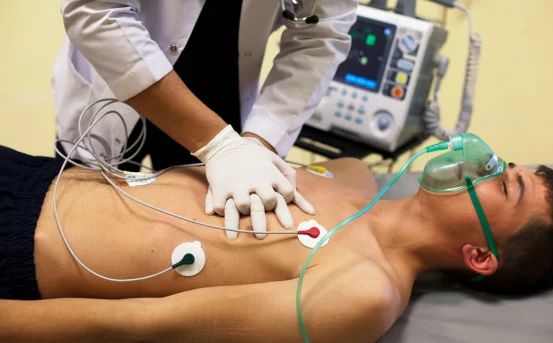Introduction
Breast reduction surgery, also known as reduction mammoplasty, is a surgical procedure aimed at reducing the size and weight of overly large breasts. Many women choose this procedure not only for cosmetic reasons but also to alleviate physical discomforts like back pain, neck pain, shoulder grooves from bra straps, and posture-related issues. The procedure involves the removal of excess breast tissue, fat, and skin to achieve a breast size that is better proportioned to the body. the procedure in breast reduction surgery is crucial for anyone considering this operation.
Understanding the procedure in breast reduction surgery is crucial for anyone considering this operation, as it helps set realistic expectations, ensures mental preparedness, and gives insight into the steps involved from pre-surgery to recovery.
With advancements in modern surgical techniques, breast reduction surgery has become safer, less invasive, and more effective, with improved outcomes in terms of both aesthetics and comfort. Whether performed for medical relief or to enhance self-confidence, the process involves meticulous planning, precise execution, and detailed aftercare to ensure optimal results.
Procedure in Breast Reduction Surgery
The process of breast reduction surgery involves several structured stages, starting from pre-operative preparation to post-operative recovery. Here’s an in-depth look at each step involved in this surgery:
- Pre-Surgery Consultation :- The journey begins with a thorough consultation with a board-certified plastic surgeon. During this session, the surgeon evaluates the patient’s medical history, overall health, breast size, and goals for surgery. A physical examination and imaging tests may be conducted to assess breast tissue and plan the amount of reduction needed. The patient is also informed about possible scarring, anesthesia, and expected outcomes. Pre-operative instructions often include avoiding certain medications like blood thinners, ceasing smoking, and maintaining a healthy lifestyle to ensure optimal healing.
- Anesthesia Administration :- On the day of surgery, general anesthesia is administered to ensure the patient is asleep and pain-free throughout the procedure. In some cases, intravenous sedation combined with local anesthesia may be used, depending on the patient’s health condition and the surgeon’s recommendation. The anesthesia team closely monitors vital signs during the entire procedure.
- Incision Techniques :- Breast reduction surgery involves different incision patterns, selected based on the amount of tissue to be removed and the desired breast shape. The most common techniques include are Anchor or Inverted-T Incision involves an incision around the areola, vertically down to the breast crease, and horizontally along the crease. Vertical or Lollipop Incision a circular incision around the areola and a vertical line down the breast, used for moderate reductions. Donut or peri areolar incision involves only a circular incision around the areola, suitable for smaller reductions. Once the incision is made, the surgeon carefully removes excess breast tissue, fat, and skin. In some cases, liposuction may be performed to remove fat deposits from the sides of the breasts and achieve a smoother contour.
- Repositioning the Nipple and Areola :- After tissue removal, the nipple and areola are repositioned to a higher, more youthful location on the breast. The areola may also be resized to match the new breast proportions. Importantly, the nipple remains attached to its underlying tissue to preserve blood supply and sensation.
- Shaping and Closing the Incisions :- The remaining breast tissue is reshaped to create a firmer, natural-looking contour. Internal sutures may be placed within the breast tissue to provide long-term support. The incisions are then closed with sutures, skin adhesives, or surgical tape. The surgeon ensures that the new breast shape is symmetrical and proportionate to the patient’s body frame.
- Post-Surgical Dressings and Support :- Once the procedure is complete, the breasts are covered with bandages or gauze dressings. A special surgical bra or compression garment is provided to minimize swelling, support the breasts, and aid in the healing process. In some cases, small drainage tubes may be placed near the incision sites to remove excess blood or fluid.
- Recovery and Aftercare :- The immediate recovery phase begins in a monitored area, where the patient wakes up from anesthesia. Pain, swelling, and bruising are common during the first few days and are managed with prescribed medications. Patients are usually able to return home the same day or after an overnight hospital stay, depending on the complexity of the surgery. During the first few weeks, strenuous activities and heavy lifting are to be avoided to prevent strain on the healing tissues. Most patients can return to normal daily activities within 1 to 2 weeks. Follow-up visits with the surgeon ensure proper healing, removal of stitches if needed, and monitoring of scar formation.
Conclusion
The procedure in breast reduction surgery is a carefully planned and executed process that aims to create smaller, more proportionate breasts while alleviating physical discomfort and enhancing body confidence. From the initial consultation to the final stages of recovery, every step is designed to ensure safety, precision, and a satisfying outcome for the patient. With the help of modern surgical techniques and experienced plastic surgeons, breast reduction surgery can dramatically improve both physical health and self-esteem, offering long-term relief and a more balanced body shape.























